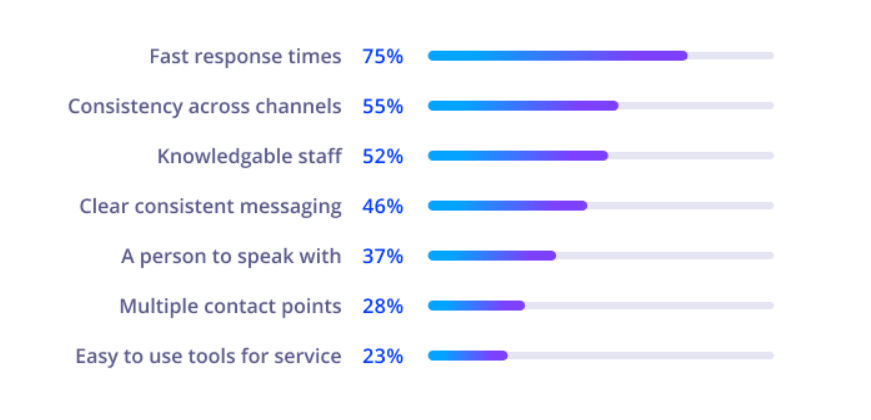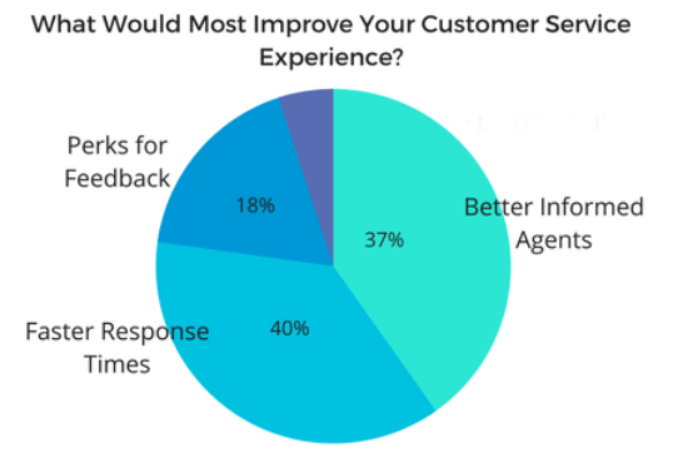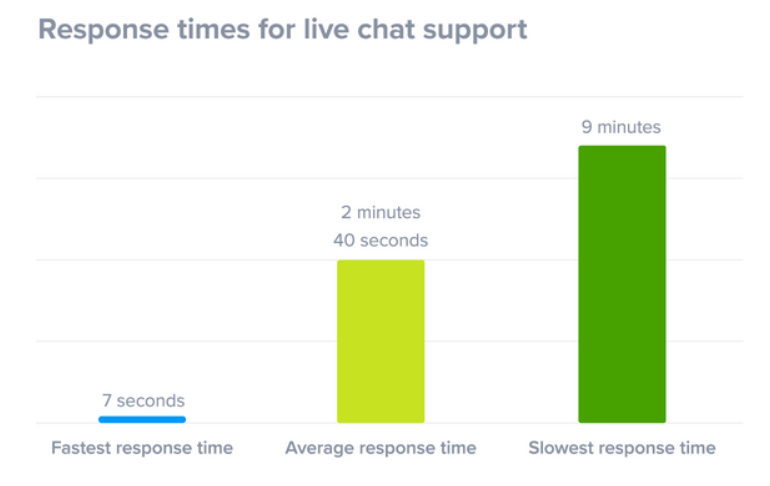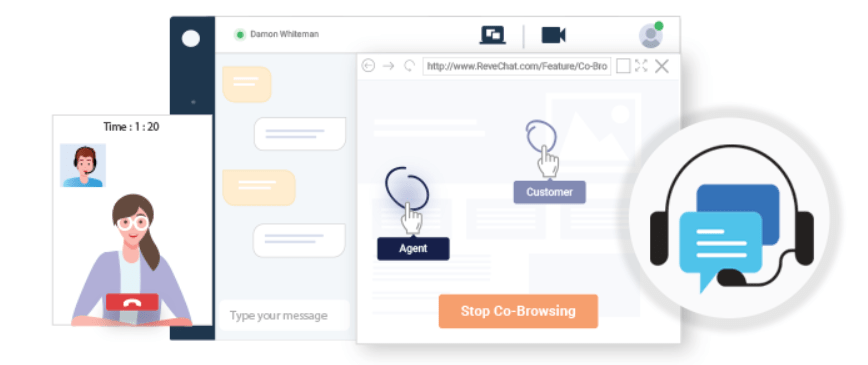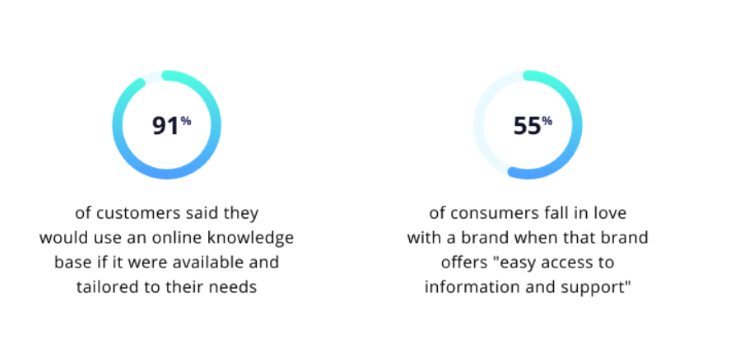Customers are the reason why brands are shaped or shaken.
Without them, your business won’t ever realize its true potential — so, you need to keep them happy.
And responding quickly to queries is always a vital factor in driving customer satisfaction.
71% of customers believe that a quick response from the service team can greatly improve their experience.
With thousands of brands competing to differentiate themselves by amazing customer service experiences, you certainly need to up the ante and do what customers want.
Considering this, it’s clear that response time is an important customer service metric that determines customer satisfaction (CSAT) scores.
It’s also the key to deliver the type of exceptional customer experiences that drive revenue and build loyalty.
If you want to stand out against the competition, there is no better way than simply responding to your customers and deliver an improved response time.
What is Customer Response Time?
Customer response time is defined as the total time taken by your support team to first respond to a customer query. The shorter the response time, the better.
While great service comprehends many things, response time is one of the most vital components.
In fact, a fast response time is the most important attribute of a good customer experience, according to the customers themselves.
Customers expect immediate answers to their problems and when done right, good service leaves customers delighted and prevents churn.
Here are two important metrics to measure your customer service response time:
First Response Time (FRT)
First Response Time (FRT) also known as first reply time refers to how long customers have to wait for the initial response of the support agent. This metric indicates that issues are being looked into at priority.
The formula to calculate the first response time is:
The FRT KPI indicates the promptness of your team’s issue addressing. It helps you to learn if your team is sufficient enough or needs to add more resources.
Average Resolution Time (ART)
Average resolution time indicates the average time taken by your support agents to solve the opened tickets in a given time frame. When you measure on a per-agent basis, you get to know who is taking longer to solve tickets.
The formula to measure the average resolution time is:
The lower resolution time indicates that less time was used to resolve the issues and it has a positive impact on the customer satisfaction rate.
Impact of Improved Response Time on Your Business
The prompt response is a key customer concern when deciding which businesses they will continue to engage with and whether they have received a satisfactory level of customer service.
When businesses invest efforts in being customer-focused, they witness significant benefits like:
Faster Resolution
59% of customers are more likely to buy when brands answer their queries in under a minute. By deploying live chat and chatbots, you can engage customers 24×7 and offer faster solutions even when your support team is not available.
Higher Customer Satisfaction
Customer satisfaction determines how happy your customers are with your service. Offering a fast response delivers a quick desired solution and creates a positive brand image, which goes a long way. Higher satisfaction (CSAT) scores indicate higher customer lifetime value (CLTV).
Better Sales Conversions
78% of consumers will buy from the first company that answers their questions quickly and accurately. Addressing the sales queries with fast responses reduces the sales process and encourages customers to make quick sales decisions.
How to Improve Customer Service Response Time
The risk of slow response time can leave your company in vulnerable situations with consequences like negative word of mouth, negative reviews, etc. Hence, fast customer service responses are incredibly crucial. So, you always need to find ways that can help your business increase the response time and make customers happy.
Here is a list of effective ways and best practices to increase user response time.
- Define Your KPIs
- Outline a Process
- Trust Live Chat for Faster Responses
- Deliver 24×7 Support with Chatbots
- Use Visual Engagement Tools to Improve Resolution Time
- Power Your Team with Adequate Product Knowledge
- Distribute Support Volume with Multi Channel Strategy
- Give Customers a Quick Access to Knowledge Base
Let us dive into a comprehensive discussion on the rules or best practices to improve first response time.
#1. Define Your KPIs
Defining KPIs is important as it helps to understand how your customer service team is performing against your customers’ expectations.
When goals are defined for your team and business, it will be taking the time to check the map that will help you to know where you are heading.
As fast response time is one main part of customer service, you also need to set up goals on how to improve customer response time.
In order to define the key performance indicators, you also need to identify those channels that your target audience uses to reach out to you. It will help you to plan a process and use different tools to respond to customer queries immediately.
Key metrics to define
Customer metrics – Tracking key customer service KPIs such as Net Promoter Score (NPS), First Response Time (FRT), Resolution Time, and Customer Satisfaction Score (CSAT) can give you a good idea of how your support channels are performing.
Team metrics – Your business needs to measure the team performance against popular KPI metrics such as Efficiency, Quality, Initiative, and Helpfulness to get a good grasp on the performance of customer channels.
#2. Outline a Process
If improving the response time were really that easy, every business would have happy customers showing glowing praises all over the internet.
But we know the reality is far from it. And not many businesses can claim to have happy customers.
Not having a proper structure or process in place is often one of the key reasons why businesses find it hard to improve their response time.
On the other hand, when organizations have solid outlined processes, it becomes easier to manage customer service communication.
With the right process in place, reducing customer response time is neither arduous nor time-consuming.
Tips to outline a process
- Identify Common Queries – Analyzing the recent chat history will help you identify the most common queries that your business addresses and then you can automate such FAQs with a chatbot to answer the common queries promptly.
- Plan the workflow – You need to set up clear expectations, plan the workflow, and adopt the right tools (email, live chat, chatbot) to reply faster to customers. Providing self-service support options like an internal knowledge base or a community page can further help with the response time.
- Set up escalation process – By defining the escalation process, the query will be further escalated to experienced agents which can help improve the first response time and reduce the number of touchpoints significantly. After escalating a ticket, agents should assure customers that their problem is being addressed as quickly as possible.
- Have a follow-up – After the support tickets are resolved successfully, you need to have a follow-up process. Following up with your customers via email or chat improves their overall experience.
#3. Trust Live Chat for Faster Responses
Response time plays a vital component in good customer service.
One of the main reasons why customers abandon an online transaction is if their questions or concerns are not addressed fast.
The two most common customer service frustrations are:
- Waiting for the support or sales agent to connect with
- Being kept on hold for a long time
Live chat is the most preferred channel by businesses as well as customers to deliver real time responses to customers.
73% of respondents indicated that “Response time is the main reason why live chat reaches satisfaction rates”.
Email and live chat are two important channels where response time is highly critical.
Here are some live chat features that help to improve first response time.
- Create predefined responses for the common queries and deliver faster and consistent responses. Canned responses reduce the response time and improve customer satisfaction.
- Route conversations across the right departments to connect with the right agent, which increases the response time by reducing the queue time.
- Categorize conversations with tags to label important conversations & organize them better. Based on the nature of the query, you can promptly engage with your customers.
- Manage multiple conversations simultaneously to respond to customers’ queries instantly. Thus, customers get an immediate response without waiting for a long time.
#4. Deliver 24×7 Support with Chatbots
64% of businesses believe that chatbots are tools to offer more customized support experiences for their customers.
You can thus automate customer communication with chatbots and provide an exceptional experience.
Automating your repetitive customer support tasks with AI chatbots helps your team to focus on complex tasks, ultimately speeding up the workflow.
For example, FundsTiger uses a chatbot for loans related queries to engage customers 24×7 and deliver answers in real time.
Automating the ways how to communicate with customers improves the brand image, but the caveat is that it should not be over automated.
How to improve response time by deploying chatbots?
- Always-on support – Chatbots offer prompt support and engage customers 24×7 when your support team is not available.
- Train your chatbot – Build your chatbot flow based on your use case and train your bot to deliver an effective and faster response to customers in real time.
- Offer hybrid support – Not all the time the bot is 100% correct. You have to follow the hybrid approach – it means the query is handed over to the support agent when the bot is unable to answer.
#5. Use Visual Engagement Tools to Improve Resolution Time
Reaching out to the support team multiple times to seek resolution of the same query is always among the biggest customer frustrations. It’s also a major reason for customer churn.
Your business can surely avoid that by implementing visual engagement tools and empower support agents to view, engage and resolve customer issues.
Leveraging live customer engagement tools like co-browsing, voice & video chat goes a long way towards fulfilling first response time. The tools enable agents to provide better, faster resolutions to the majority of support issues, thereby improving the first contact resolution metric significantly.
Here is how visual engagement helps in increasing the response time.
- Reduce the number of touchpoints – Co-browsing and video chat helps to diagnose the exact issue and serve a solution faster. Viewing the issue helps to learn the cause of the error and solve it in the first attempt, thus reducing the number of touchpoints.
- Personalized solutions – Face to face chat during real time encourages personalized conversations and delivers effective solutions to complex issues.
- Improve first response time – Visual engagement is based on the essence – see and fix. Gaining first-hand knowledge of the issue helps in delivering the right solution faster.
#6. Power Your Team with Adequate Product Knowledge
Customers expect relevant answers to their queries delivered over the touchpoint and channel of their choice. Not having a competent team can create the worst customer service examples.
89% of consumers switched businesses due to bad customer service and shared their negative experiences online.
If your business is missing out on having a knowledgeable support team, there are chances of losing loyal customers and deflecting brand reputation.
This brings out the utility of having a knowledgeable as well as a competent support team to ensure smooth experiences for customers.
Best practices for improving team efficiency.
- Regular training – Conduct training sessions on the updated features of your core products or services and convey crystal clear brand messaging. It should be consistent across all departments and teams.
- Distribute business details – Share all the important business information across the whole support team to make them aware of the issues and solutions.
- Monitor and improve – Keep monitoring your defined business metrics and KPIs to understand the areas when you need to focus more on the forthcoming training sessions.
#7. Distribute Support Volume with Multi Channel Strategy
When your business has invested in just one or two support channels, it will always find it tough to manage the customer load efficiently.
Since every query is unique and when customers are not managed well, it often leads to bad customer service.
To avoid that situation, your business needs to have a presence on multiple channels together as it will ensure value to each query.
When your business has a multi channel strategy, it can have resources equally distributed to different channels and thus will be able to manage customer quantity on any scale.
Tips to distribute support volume
- Plan your customer support resources in a way so that your business is able to successfully meet the workload at different times of the year, i.e. peak time and during the off-season.
- Make sure that you give equal weight to all support channels in terms of resource allocation else it would be difficult to manage customer workload in an efficient manner.
#8. Give Customers a Quick Access to Knowledge Base
Allowing your customers the luxury to help themselves is sometimes the best possible support you can give.
And to do that, you need to give them quick access to immediate knowledge without requiring personal assistance.
When you have a comprehensive knowledge base including product guides, tutorials, FAQ pages, etc. it can act as a self-service portal for customers.
However, a knowledge base is not meant to replace human support — It is there to assist customers while allowing them the freedom of getting answers to their questions with no hassle.
Your customers will be empowered to find their own solutions, feel accomplished, and appreciate your effort to make things easy and approachable.
Benefits of a good knowledge base
- Deliver solutions faster – Shifting basic support queries over to the knowledge base makes it easy for the customers to find answers and save time from connecting with the agent and being in the queue.
- Make customers happier – Getting quick solutions to the issues with human support makes customers delighted and delivers a great experience.
Level Up Customer Experience with Improved Response Time
Customer expectations should drive how businesses perceive and deliver support. It means businesses need to align with customer expectations. However, response time is a customer-related metric and businesses need to be as close as possible to improve customer response time.
Every business should strive to provide fast response time as it is a direct metric that impacts higher customer satisfaction. With a solid process, businesses will be able to achieve the desired net promoter (NPS) scores.

